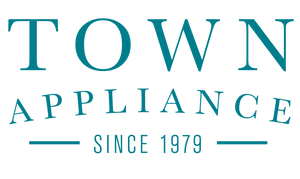
Your refrigerator is typically going to be one of the appliances you use the most in your kitchen. A clean fridge will ensure your food stays fresh longer, prevent germs from building up and cross-contaminating food, and avoiding mold and other unsightly messes from accumulating. If you're looking for a guide on how to clean and sanitize your refrigerator, keep reading to learn more.
Performing a Deep Clean
The best way to ensure all parts of your fridge are cleaned and sanitized is to embark on a deep clean. It's recommended that you try and do this at least once a month to make it easier to clean, rather than waiting until stains and odors become unbearable. Here are the steps for a routine deep cleaning:
Run Through Food
Remove each item from the refrigerator one by one to check them. If you have a cooler available, fill it with ice and set it aside to transfer everything that is still edible while you clean. If jars, bottles, or containers are sticky or stained, wipe them off with a wet towel. Dispose of anything that has leaks, foul odors, appears to be going rancid, or has passed its expiration date.
Take Care of Refrigerator Parts
Remove all detachable shelves and drawers. When they're outside the fridge, you can clean them more fully, and you'll have greater access to the refrigerator's inside. In a sink or bowl, combine soap and warm water. Hand-wash the objects with a sponge one at a time in your sink. Rinse thoroughly to ensure that no residues of dishwashing liquid remain. Before restoring shelves and other removable parts, ensure that they are dry and that you have thoroughly cleaned the inside of your refrigerator.
Finish the Interior
Once you've removed food and parts of your fridge, you can start to clean the interior. Standard multipurpose cleaners will work just fine, but you might also want to consider organic and edible cleaning solutions if you feel your food would be unsafe around traditional cleaning products. For example, you can fill a spray bottle halfway with two teaspoons of baking soda and a quart of hot water to make a safe alternative.
Spray the fridge's interior, including the walls, any built-in shelving, and door with the cleaning solution. Wipe down the surfaces with a microfiber towel, sponge, or gentle cloth. If any spots give you trouble, try focusing on them with a scrub brush and hot water. Dry everything with a clean towel once you're finished.
Getting Rid of Smells
When you notice particularly foul-smelling odors emanating from the fridge, a deep clean is often the best solution. However, you can try leaving an opened box of baking soda on a shelf to help absorb odors. It's also possible that the smells from the refrigerator have gotten into the evaporator coil, which creates cold air for the fridge and freezer. You will find the coil and the fan that distributes the air on the freezer's rear wall. You'll have to clean and replace the evaporator coil, which should help clear out the smells.
Pay Attention To the Exterior
You should also be sure to clean the fridge's exterior by using a multipurpose spray to wipe the surfaces, knobs, and edges along the inside of doors. However, a multipurpose spray may leave streaks or hazy patches on a stainless-steel refrigerator. If that is the case, you should wipe the exterior with the multipurpose spray, then follow up with a stainless-steel appliance polish to help keep it spotless.
Dealing With Recalled Food
The U.S. Department of Agriculture's Food Safety and Inspection Service (FSIS) is responsible for guaranteeing the safety of meat, poultry, certain fish, and processed egg products. They regularly check examples of these products, sometimes in response to consumer complaints and other times in response to information from makers or distributors. Occasionally, they will issue recalls when these foods are deemed unsafe for consumption.
If you find that your fridge contains recalled food items, you'll need to dispose of the food and clean your fridge. The CDC has issued guidelines on what you should do when this happens. Many of the steps are similar to the ones above. However, it's crucial to follow these step-by-step in the order below to protect yourself and anyone else who might eat food from your refrigerator. The guidelines are in the following order:
- Throw away the recalled item, as well as any other foods that may have come into contact with it. Place the food in your garbage inside a sealed bag. Wash the recalled food in hot, soapy water before reusing it if you stored it in a reusable container.
- While you clean, empty the remainder of the contents of your refrigerator and place them on a counter or table. Remove any shelves, drawers, or other detachable components. Foods that you need to store in the fridge for more than two hours should not be left out.
- Hand wash shelves, drawers, and any other detachable components with hot, soapy water. Using a clean towel, pat the parts dry. It would be best not to run cold glass shelves or drawers under hot water as the glass may crack. First, allow them to reach room temperature.
- Clean the interior of the empty refrigerator with hot, soapy water before wiping it down with clean water to remove the soap. Using a clean towel, pat everything dry. Remember to clean the inside of the doors and any drawers that you cannot remove. Sanitize your refrigerator with a solution of 1 tablespoon liquid bleach in 1-gallon water once you've cleaned it with hot, soapy water.
- Replace the shelves, drawers, and other detachable pieces, as well as anything else you've removed from the fridge. Before you return food and drink containers to the clean refrigerator, wash them with hot, soapy water.
- After you've finished cleaning, wash your hands with soap and water. Wipe the kitchen countertops that hosted food, drinks, refrigerator components, and cleaning products with hot, soapy water. Before you reuse towels that you used to dry the refrigerator, wash them.
Following this guide on how to clean and sanitize your refrigerator will prolong the life of your appliance and keep your food safe and fresh. Town Appliance offers high-quality appliances such as a built-in refrigerator for sale when you're ready for an upgrade or replacement. Our staff of highly educated individuals with years of expertise in providing excellent customer service can answer any question you have regarding our products.







